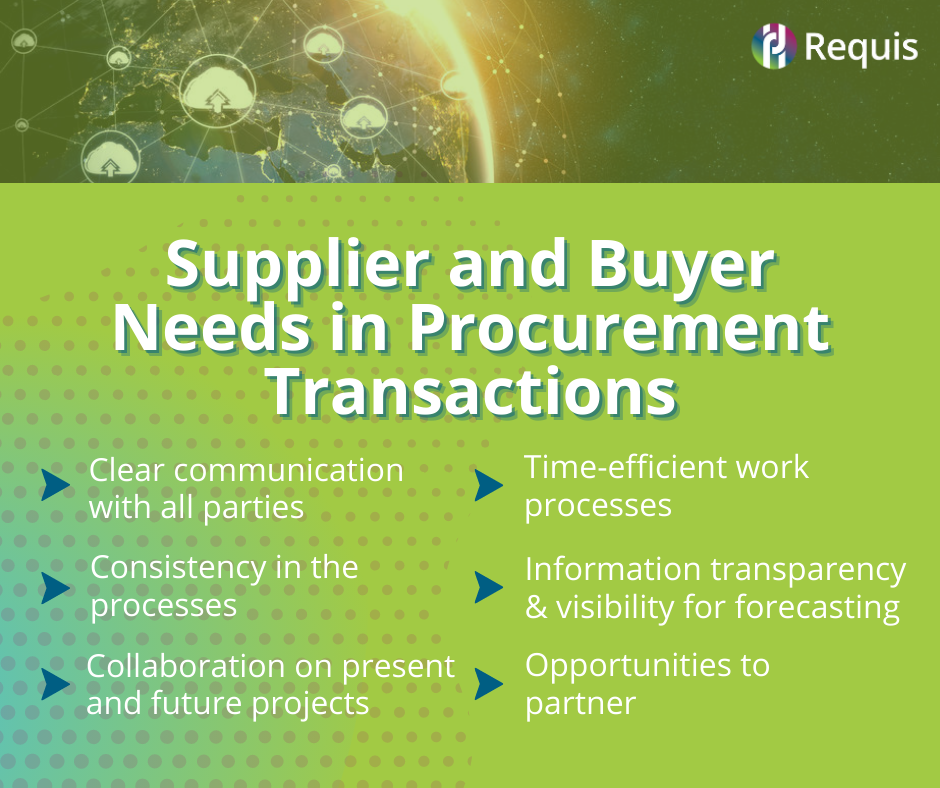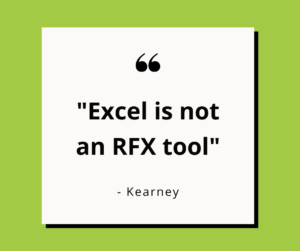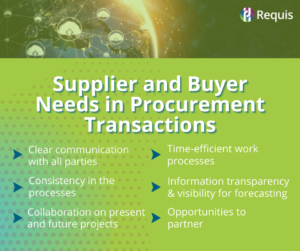December 19, 2022
Digital Procurement Platform Gives Suppliers a Competitive Edge: Part 1
In today’s marketplace, suppliers can use collaborative relationships and digital platforms to shift from a cost-reduction focus to build-value cultures.
In the global marketplace, traditional procurement processes are not efficient. Remote work and an increase in digitization have radically changed how companies communicate internally and externally, so suppliers must adapt to the new sales environment.
A recent PwC survey found only 10 percent of respondents had a high digitalization rate for procurement data. Consequently, supplier companies require advanced strategies to compete in the expanding marketplace effectively.
Possible solutions are:
- Embracing new technologies
- Investing in digital relationships
- Using value-creating platforms and networks to build reputations and manage businesses.
Supply chains involve relationships, engagement, and collaboration. Looking ahead, suppliers can’t rely on old methods to market their companies and products. Here’s why.

What are the problems for suppliers?
B2B has two sides—suppliers and buyers. In the real world, the number of suppliers greatly exceeds potential buyers. Large companies may have 50,000 to 100,000 suppliers. Consequently, vice presidents of sales and procurement professionals want opportunities to leverage their products and services better. Unfortunately, most procurement software is geared to buyers’ needs, thus leaving suppliers with limited benefits. Therefore, finding the edge to be a preferred supplier is a critical advantage.

Digitalization is causing significant changes in information management. Notably, procurement processes consume two-thirds of a company’s revenue. Improving purchasing and supply processes is a value-creating possibility. Digitalizing procurement processes creates opportunities and problems. More importantly, companies are refocused on creating value with their supply chains. According to Kearney, value creation involves evaluating areas such as:
- Supply assurance
- Risk mitigation
- Sustainability
- Innovation.
User experience is not equal for all parties.
Most procurement software is written for the buyer’s benefit and does not address suppliers’ user experience. As a result, suppliers waste significant time building individual profiles for every potential client and resubmitting information on all inquiries. Requiring different logins for applications and answering Excel-formatted RFXs consume procurement professionals’ time. Unfortunately, procurement professionals must handle time-wasting activities instead of doing valuable analytics.
Yet, suppliers and buyers have everyday needs, as summarized in Table 1. Advanced procurement software and platforms can handle Table 1 items. In particular, support of collaboration and connectivity through digital platforms enables suppliers and buyers to forge relationships and foster more productive communication. Likewise, clear communication and information sharing support transparency for all parties, especially during unplanned interruptions and other events. But first, suppliers must find the best-fit solution for their individual needs.

Table 1
Procurement relationships must evolve.
Procurement is about relationships. As the digital transformation continues, the people-to-people purchasing relationship must evolve into long-term digital connections and bonds. The marketplace is global. And digital platforms and technologies provide more efficient ways for buyers and sellers to collaborate.
Building a partnership empowers suppliers and buyers (Table 1). More importantly, these relationships become productive and result-oriented when real-time information is shared. Connectivity includes sourcing events, project announcements, and new development releases.
For suppliers, increased access to forecasts and project developments supports opportunities to optimize their supply assurances, create innovative prospects, and minimize supply chain risks. Likewise, access to project histories and pricing assists in long-term planning. In short, the connection between suppliers and buyers goes beyond RFXs. Collaboration and building relationships (Table 1) create value for all parties.
In Part 2
Suppliers have challenges. However, innovative procurement technologies and platforms can support suppliers’ goals and increase business development. The second part of this discussion dives into the advantages of advanced digital procurement platforms geared to supplier needs. Like LinkedIn, community-oriented procurement platforms focus on standardizing information, communicating clearly in real time, and building relationships.
